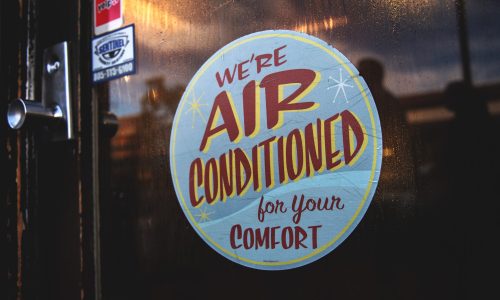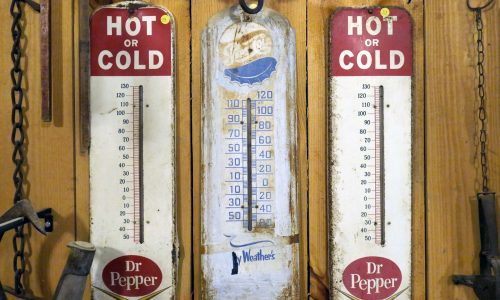There are plenty of technical terms and acronyms in the field of HVAC that can be perplexing to the uninitiated. CFM, which stands for cubic feet per minute, is one such term. It is a crucial measurement in HVAC systems, and it is essential to address questions like “what is cfm in HVAC” and grasp the meaning and significance of the term in order to maintain efficient and effective HVAC operations.
In this article, we will look into the world of HVAC and understand CFM.
What does CFM stand for in HVAC?

In the context of HVAC systems, the term “CFM” stands for “cubic feet per minute.” CFM is a piece of important information that assists HVAC professionals and engineers in the design, installation, and maintenance of systems that provide sufficient air distribution and ventilation.
What does CFM mean in HVAC?
In the sphere of HVAC, CFM is a foundational concept. It refers to the volume of air that travels through an HVAC system in one minute. The CFM value quantifies the rate at which air is recirculated in a particular space, and it is a crucial metric for ensuring the efficiency and effectiveness of HVAC operations.
To fully understand the relevance of CFM in HVAC, it is necessary to know the function of air circulation in HVAC systems. HVAC systems are designed to provide heated, cooled, or conditioned air to indoor spaces. This procedure involves extracting air from the surrounding environment, treating it to the desired temperature and humidity levels, and then redistributing it. For optimum indoor comfort and air quality, it is vital that air passage through the system be quick.
CFM is used to determine the required air exchange to maintain a healthy and comfortable indoor environment. It ensures that each area receives an adequate supply of air, allowing for appropriate ventilation and temperature regulation. By accurately measuring CFM, HVAC professionals are able to evaluate the airflow requirements of a space, size the ductwork accordingly, and choose the appropriate equipment to meet those needs.
CFM is especially crucial for achieving sufficient airflow. Maintaining excellent indoor air quality requires adequate ventilation to neutralize and remove pollutants, odors, and excess moisture. CFM is used to calculate the volume of fresh air that must be supplied to a space and the volume of stagnant air that must be exhausted. This constant air circulation prevents the accumulation of contaminants and creates a healthier indoor environment.
Why is CFM important for HVAC systems?
Now that we know what is CFM in HVAC, it’s crucial to understand its importance. CFM is essential for ensuring the functionality and efficacy of HVAC systems. In the HVAC industry, CFM is significant for the following reasons:
Proper ventilation
Ventilation that is necessary is one of the most important factors in creating and maintaining a healthy indoor environment. CFM is used to calculate the volume of air necessary for optimum air exchange, which helps reduce the accumulation of pollutants, odors, and excess moisture.
It makes certain that fresh air is continually provided while also ensuring that stale air is continuously expelled, which ultimately results in an improvement in the quality of the air within.
Temperature control

CFM is essential for attaining the desired temperature levels. By measuring air volume, HVAC professionals can determine how much-conditioned air is necessary to accomplish the desired cooling or heating effect. This data guides the selection and measurement of HVAC equipment, ensuring efficient temperature regulation in a given space.
System performance
The proper CFM rating guarantees that the HVAC system operates at peak efficiency. Insufficient airflow can burden equipment, resulting in diminished performance and increased energy consumption. In contrast, excessive airflow can lead to energy waste and improper temperature regulation. By precisely determining the required CFM, HVAC systems can operate at peak efficiency, conserving energy and enhancing overall performance.
How is CFM calculated?
After knowing what is CFM in HVAC and its importance, it’s time to know the techniques used to measure it. To accurately measure CFM, HVAC professionals utilize a variety of methods and instruments. Here are some typical CFM measurement techniques:
Anemometers
Anemometers are portable devices with tiny fans or rotating vanes. They determine the airflow velocity and convert it into CFM values. The CFM can be calculated by placing an anemometer at specific locations in the ductwork or near supply and return vents and measuring the air velocity.
Air flow hoods
Flow hoods are specialized tools created for the sole purpose of measuring airflow in HVAC systems. A cowl conceals the supply or return exhaust, capturing the airflow. A calibrated device is attached to the canopy and measures the flow rate and calculates the CFM.
Pipe traverse
In certain instances, HVAC personnel execute a duct traverse to accurately measure CFM. Utilizing an anemometer or other airflow measuring device, measurements are taken at multiple locations within the ducting. The CFM can be determined by averaging the velocity measurements and considering the cross-sectional area of the duct.
Manufacturer data
Typical CFM ratings for HVAC equipment, such as air handlers and blowers, are supplied by the manufacturer. These ratings indicate the equipment’s airflow capacity under specified operating conditions. This information can be used by HVAC professionals to ensure that the equipment is delivering the desired CFM for optimal performance.
Importance of accurately calculating CFM
Maintaining the efficacy and efficiency of an HVAC system requires accurate CFM calculations. Incorrect CFM values can result in a variety of issues, such as:
Improper air distribution
Inadequate CFM can lead to inconsistent air distribution throughout a room. Certain locations may have insufficient ventilation, resulting in temperature fluctuations and occupant discomfort. Proper CFM calculation assures the uniform distribution of conditioned air, creating a comfortable environment.
Poor energy efficiency

A mismatch between the requisite CFM and the actual airflow can result in wasteful energy consumption. Inadequate ventilation can cause HVAC equipment to work harder and consume more energy in order to maintain the intended temperature. In contrast, excessive airflow dissipates unnecessary energy. Appropriate CFM calculation optimizes energy consumption, resulting in cost savings and diminished environmental impact.
Indoor air quality is poor
Since it allows for the buildup of impurities, allergies, and moisture, inadequate CFM may put the quality of the air within a building at risk. The improper removal of stale air may lead to a buildup of toxins, which can have a detrimental effect on the health of those who live in the building. By ensuring that there is sufficient CFM, HVAC systems are able to filter and exchange air effectively, which contributes to a healthier interior environment.
Conclusion
In this article, we have learned what is a CFM in HVAC and its significance. To sum up, CFM, or cubic feet per minute, is an essential HVAC measurement unit. It is essential for sustaining appropriate ventilation, temperature control, and system efficiency, as it represents the volume of air that flows through an HVAC system in one minute.
A precise CFM calculation ensures that the HVAC system operates optimally, thereby providing optimal comfort, energy efficiency, and indoor air quality. HVAC professionals such as Autumn Air rely on a variety of measurement techniques and instruments to determine CFM accurately, ensuring that HVAC systems are designed, installed, and maintained properly.
Autumn Air provides services that are conducted in a highly professional manner, and you may want to give us some thought if you are interested in having your HVAC system serviced. You may arrange our service online here, or you can reach us at (602) 266-5247.
